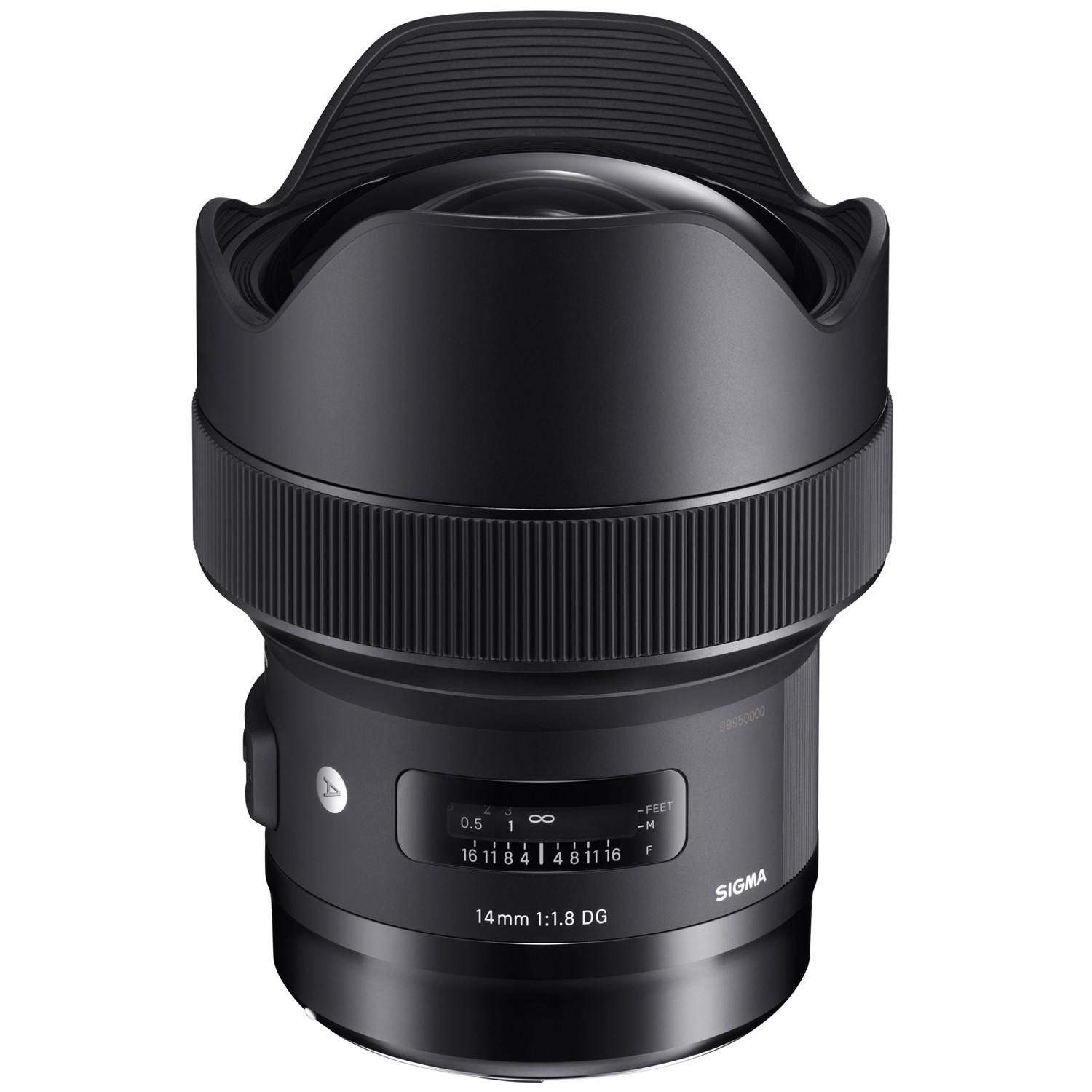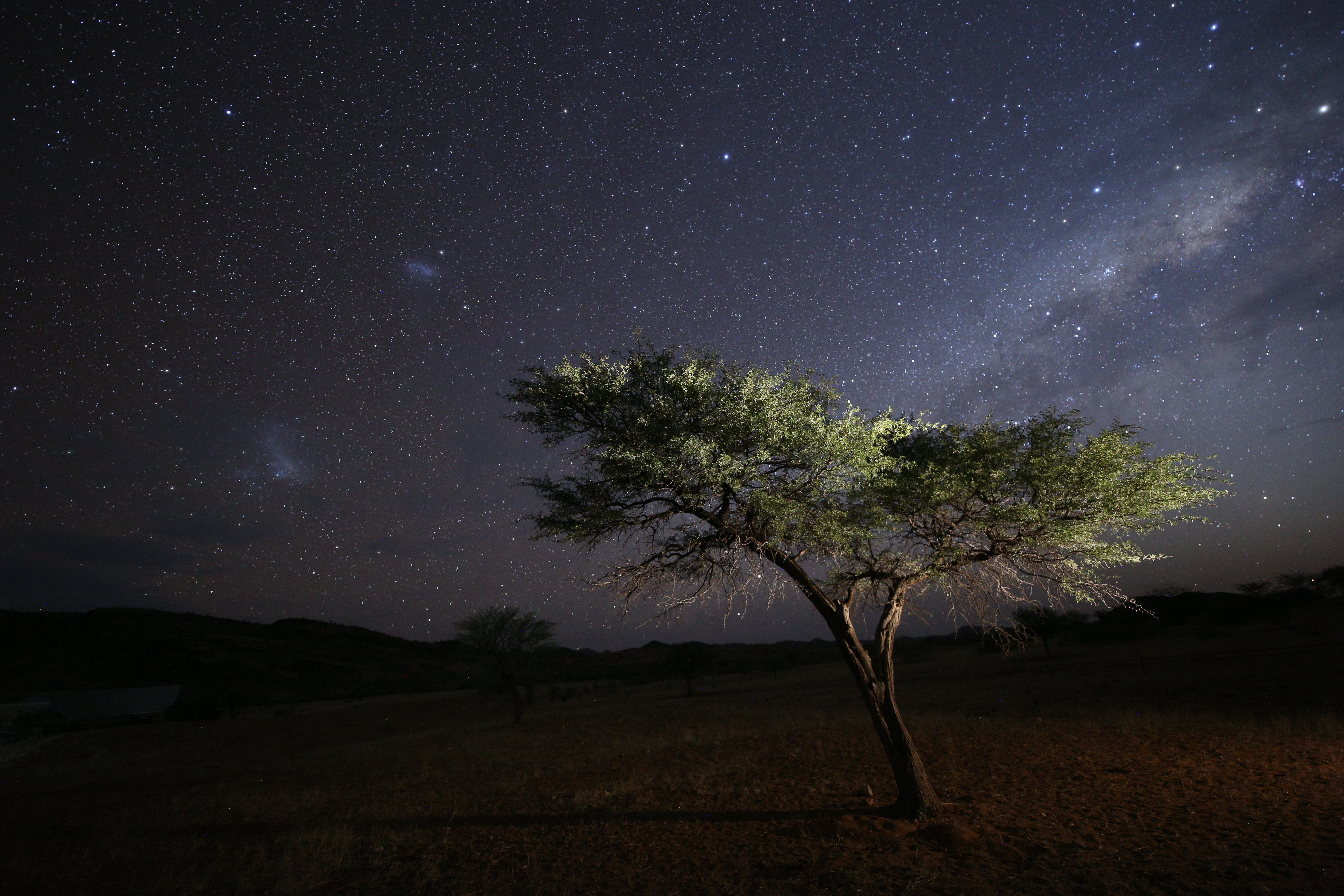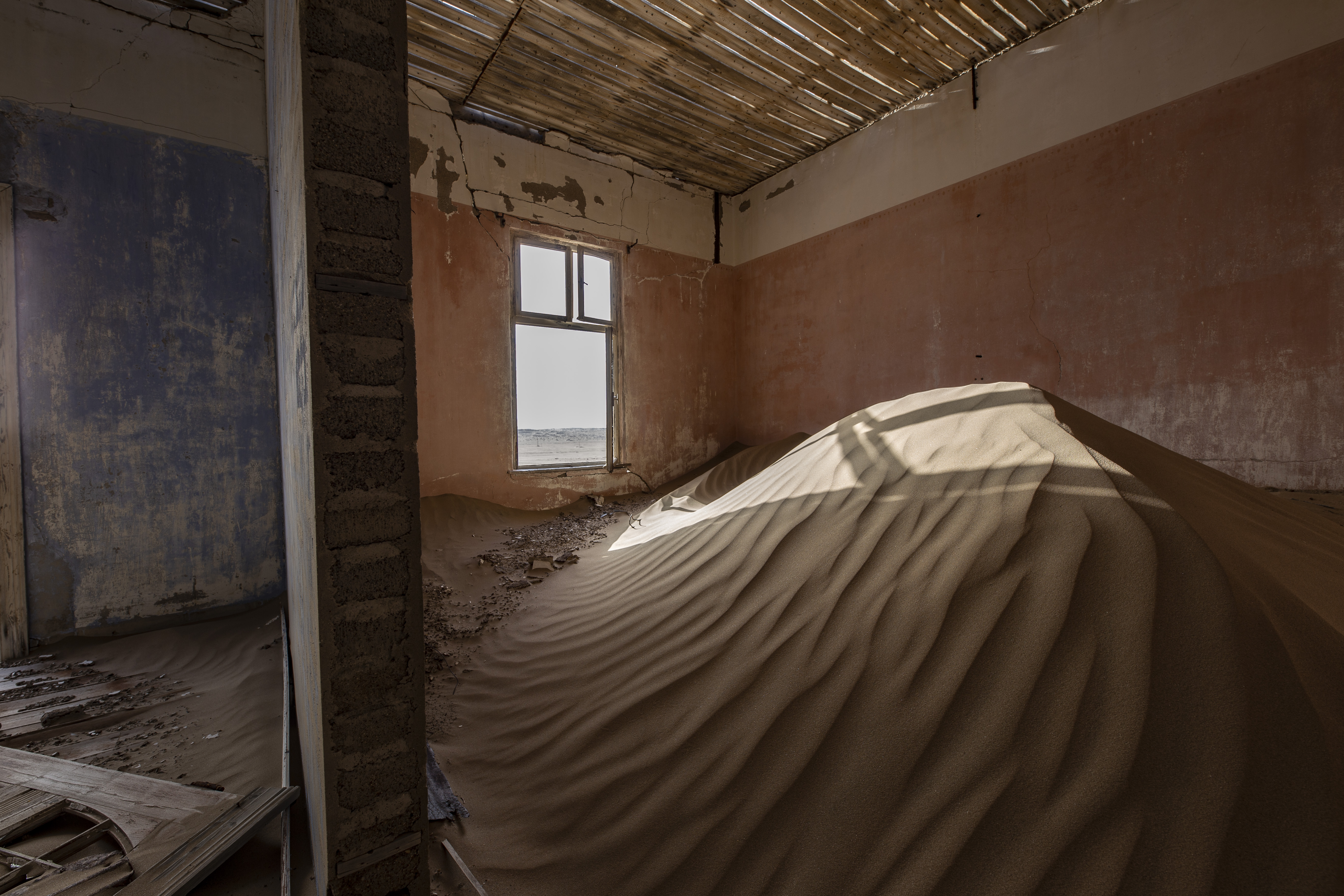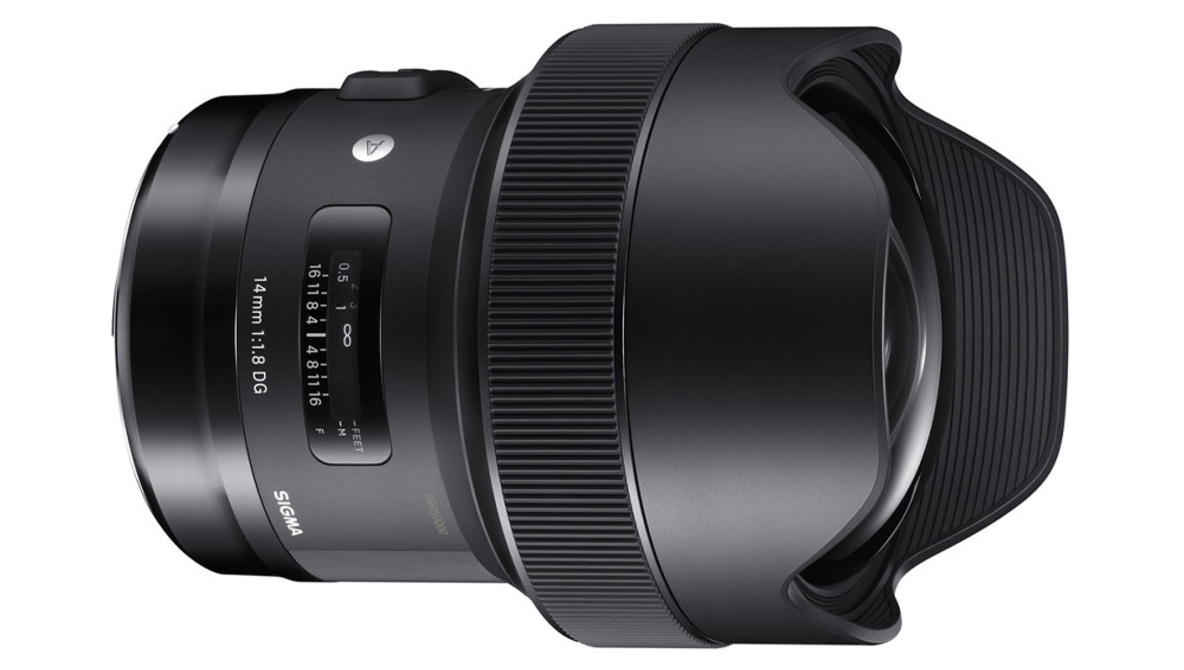Sigma 14mm F18 Dg Hsm Art Lens for Canon Ef or Canon 14 Mm
Our Verdict
The only broad-angle that goes to f/1.8, an entire stop faster than its competitors, this super-fast lens for Canon and Nikon full frame DSLRs, and Sony E-mount mirrorless cameras, enables incredible compositions.
For
- Collects twice the light of whatever other lens
- Sharper, cleaner and brighter astro-images
- Excellent build quality
- Very placidity auto-focus
- Dust and splash-proof
Confronting
- Heavy at 1.2kg
- Softness in corners
- Expensive
This is a lens that'south all about speed. I've been photographing the dark sky for the last few years, and I've got used to the settings on the manual focus Samyang 14mm f2.viii ED AS IF UMC Lens f2.8 for 25 seconds. Easy.
In the expressionless of night, I simply ever tinker with the ISO. Stepping-upward from that £300 lens to this £1,200 lens for astrophotographer, notwithstanding, doesn't just change the settings. Information technology changes everything!
Read more than:
Samyang'due south AF 14mm F2.8 F is the company's outset AF lens for Nikon cameras

Features
Available with mounts for full-frame DSLR cameras from Canon, Nikon, Sigma and Sony (E-mount), the Sigma 14mm f/1.8 is all about speed. The widest discontinuity 14mm lens in existence, it adds a whole actress f-stop, going down to f/ane.8.
That has the instant effect of beingness able to do in about 10 seconds – and often far less – what normally takes 25-30 seconds. In short, it finds the Milky way a lot quicker, and fifty-fifty puts information technology on the photographic camera'southward LCD screen.
Although astrophotographers are likely going to use the Sigma 14mm f/one.8 on transmission infinity focus, this is an auto-focus lens, and it's almost completely silent.
Whether you're planning moody images of landscapes covered in cloud (a detail skill of wide-angle lenses similar this) or photos featuring bokeh (another highlight), the Sigma 14mm f/i.8 is more versatile than it initially seems.
For all its talents, the Sigma Art 14mm is not specially easy to travel with. For starters, information technology weighs one.12kg, over twice as much as a 500g Samyang 14mm f/two.viii I'm used to traveling with.
But the real issue is its unavoidable fisheye-shaped lens, which here has a 114° field of view. Forgetting adding a UV filter to protect this lens. That'southward a problem astrophotographers are used to with all wide-angle lenses, only on the Sigma Art 14mm its glass actually is very bulbous and, frankly, information technology costs a lot more than well-nigh lenses used for astrophotography.
Information technology sticks out so much that I was permanently afraid of scratching information technology. However, I made it through a long trip through Namibia with only a picayune dust to remove – and nada scratches – then this isn't a alert, merely something to carry in mind.
The optical design is based on xvi elements, laid out in eleven groups, while the Sigma 14mm f/1.8 also builds-in a 46-megapixel APS-C X3 direct image sensor. The entire lens has a grit- and splash-proof design.
Sample prototype gallery



Functioning
Use the Sigma 14mm f/one.eight for astrophotography and concerns about which ISO setting to use pretty much get a thing of the past. Instead of trying to maximise the corporeality of light coming into a f/2.8 lens by braving higher and higher ISO settings (and thus battling noise in post-editing), having admission to the f/1.8 chops of the Sigma 14mm means ISO can be left on a conservative setting.
Used on the Milky way at f/1.8 for ten-25 seconds at ISO 3200-4000, the results on a full-frame Canon EOS 6D were impressive. Put just, collecting more than light gives you a lot more options. For example, a 25-second shot on a f/2.viii lens gets the Milky Manner looking brilliant, but simply after it's been teased-out on Photoshop.
Using the Sigma Fine art 14mm, the Galaxy is right in that location in the LCD on the back of the photographic camera, particularly if the exposure time is twenty seconds or more. Y'all can frame a shot more easily while out in the field, merely the real do good is a clean image.
Since the shutter is open for less time to capture the same amount of low-cal, it ways using a lower ISO. A shorter exposure and a lower ISO means less noise. Shorter exposures also means sharper stars with less trail. It's win-win.
In fact, you lot can add another win, because its f/1.8 setting also ways a shallow depth of field, then when used in daylight it's easy to create shots featuring a make clean and seamless bokeh effect. Add to that some fine detail, excellent contrasty colours, and a about-silent automobile-focus, and it'due south quite a parcel.
However, the Sigma 14mm f/1.8 is not perfect. It chronically weighs downward y'all camera bag, which is galling if you only intend to use it occasionally at night.
Although this lens gives excellent sharpness and detail in the centre of photos – where information technology'due south truly fantabulous – we did notice some baloney in the corners of our images. However, it'due south not virtually as affected every bit cheaper wide-angle lenses, and then information technology's slightly unfair to complain.
Specifications
• Total-frame compatible: Yes
• Elements/groups: 16/11
• Minimum focus distance: 27cm
• Max magnification: 0.1x
• Manual focus override: Yes
• Focus limit switches: No
• Internal focus: Yes
• Filter size: N/A
• Iris blades: 9
• Weather seals: Yes
• Supplied accessories: Hood, soft example
• Dimensions: 126mm x 95.4mm
• Weight: 1,170g

Verdict
The Sigma records well-nigh twice as much light as any other astrophotography lens around, and as such it'south so, and so useful in creating more impactful night heaven photos. In fact, it's as much nigh taming this light bucket of a lens equally it is about getting the most out of it, and generally the all-time results come from using shorter exposures times and a lower ISO, which means clean and sharp images of the dark sky.
Not that the Sigma Fine art 14mm doesn't bring some restrictions. The forepart chemical element on the lens is super-curved, and since information technology's incommunicable to fit filters without a complicated filter holder fix-upwardly, it's likely that the Sigma Art 14mm will need to be used naked.
Astrophotographers are used to using wide-angle lenses without filters on, merely normally those lenses are a lot less valuable that the Sigma Art 14mm. It requires conscientious handling, and at one.2kg it's a heavyweight option.
In an age where the tiresome-glass in smartphones dominates, this lens' fast-glass is something to go excited virtually. It's big, information technology's heavy and it's expensive, but if you're into astrophotography, the Sigma 14mm f/1.eight DG HSM Art lens is as well unbeatable if you lot're heading out into the night.
Source: https://www.digitalcameraworld.com/reviews/sigma-14mm-f18-dg-hsm-art-lens-review
0 Response to "Sigma 14mm F18 Dg Hsm Art Lens for Canon Ef or Canon 14 Mm"
ارسال یک نظر